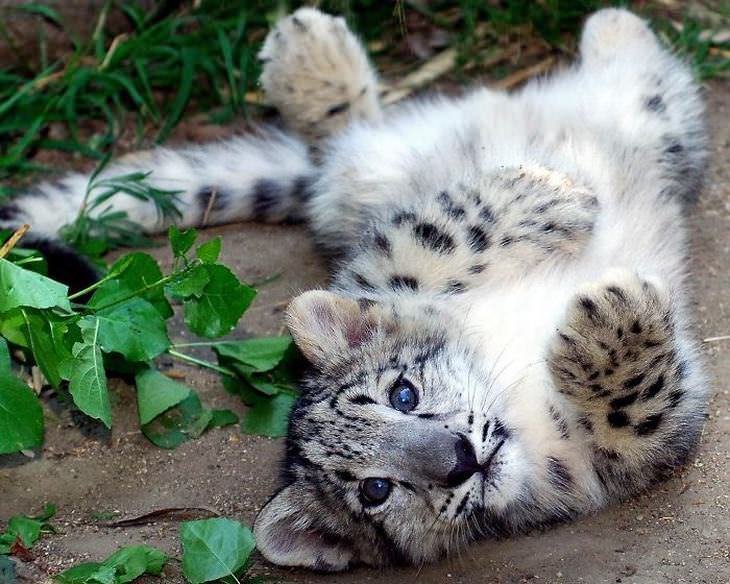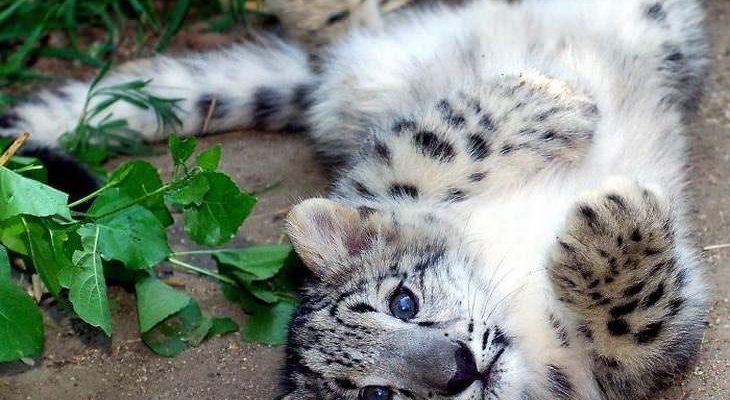
Imagine you’re at a party and you see a group of friends who look alike—maybe they have similar hair or styles. You might then think, “Wow, they must be related!” In the same way, several animals share similarities with the snow leopard, whether it’s their habitat, physical traits, or behaviors. Let’s dive into the world of these remarkable creatures and uncover their unique characteristics.
1. Persian Leopard
The Persian leopard is one of the closest relatives to the snow leopard. Found primarily in the mountains of Iran, these cats are known for their beautiful rosette-patterned fur. Though both leopards have a similar base coat color, the Persian leopard is typically a bit larger and has a more robust build.
Their habitats can also vary. While snow leopards thrive in higher altitudes, Persian leopards can adapt to a range of environments, from mountains to forests. You might notice that the Persian leopard’s coat is a bit more golden than the snow leopard’s grayish fur, which helps them blend in with their surroundings. They share some common hunting habits but often rely on different prey due to their distinct environments.
Key Differences
– Size: Persian leopards are generally larger.
– Coat Color: Persian leopards have a more golden hue.
– Habitat: Persian leopards can be found in diverse environments, while snow leopards prefer mountainous regions.
2. Clouded Leopard
Next up is the clouded leopard, a fascinating species known for its large, cloud-like spots. Found in Southeast Asia, these cats are smaller and more agile than snow leopards. Here’s the thing—while snow leopards are built for cold, mountainous regions, clouded leopards thrive in the humid forests of Southeast Asia.
Their climbing skills are exceptional, enabling them to navigate trees with ease, unlike the snow leopard, which prefers rocky terrains. When it comes to size, clouded leopards are about the same length as snow leopards but are much lighter in weight.
Key Differences
– Spot Pattern: Clouded leopards have distinct cloud-like markings.
– Habitat Preference: They thrive in tropical forests rather than cold mountains.
– Size: Clouded leopards are generally smaller and lighter.
3. Lynx
The lynx is another fascinating feline that, while not a direct relative to the snow leopard, shares similar features. Lynxes are medium-sized wild cats known for their tufted ears and short tails. They inhabit cold, northern climates, much like snow leopards, and are excellent hunters, often preying on small mammals.
You might notice that lynxes have a more compact body and shorter legs compared to snow leopards, giving them a different overall appearance. Their fur is also thicker and fluffier, which helps them survive in extremely cold conditions.
Key Differences
– Ears: Lynxes have distinctive tufted ears.
– Body Shape: They are more compact than snow leopards.
– Tail: Lynxes have shorter tails compared to snow leopards.
4. Tiger
The tiger is another big cat that shares some similarities with the snow leopard, especially regarding habitat and hunting skills. Tigers, particularly those in colder regions, can have a similar build and thick fur. Both felines are solitary hunters and are skilled at stalking their prey.
However, the most obvious difference is their coloration. Tigers boast striking orange fur adorned with black stripes, which is a stark contrast to the snow leopard’s spotted, camouflaged coat. Their size also sets them apart—tigers are typically much larger and heavier.
Key Differences
– Coloration: Tigers have bright orange fur with black stripes.
– Size: Tigers are generally much larger than snow leopards.
– Habitat: Tigers prefer a wider range of habitats, including jungles, wetlands, and grasslands.
5. Caracal
The caracal is a fascinating cat found in Africa, the Middle East, and Central Asia. Though they look quite different from snow leopards, they share a few common features, such as being agile and stealthy hunters. Caracals have a distinctive appearance with long tufted ears and a sleek body.
What’s interesting is that caracals are typically smaller and more slender than snow leopards. They possess a unique hunting style—watching for birds and leaping high into the air to catch them mid-flight, which is quite different from the snow leopard’s hunting approach.
Key Differences
– Size: Caracals are smaller and more slender.
– Ears and Tail: They have pronounced tufted ears and short tails.
– Hunting Method: Caracals are known for their agility and aerial hunting.
6. Ocelot
The ocelot is a small wild cat native to the Americas, known for its beautiful spotted coat, which can sometimes resemble that of the snow leopard. These cats are primarily nocturnal hunters, often using their keen senses to stalk smaller prey.
While ocelots have similar markings, they are significantly smaller than snow leopards and are typically found in tropical forests and grasslands, rather than the cold, mountainous habitats that snow leopards call home. If you see an ocelot, you’ll notice that their body shape is leaner and more petite, allowing for quick movements through dense vegetation.
Key Differences
– Size: Ocelots are much smaller and lighter.
– Habitat: They prefer tropical regions rather than mountainous areas.
– Coloring: While they have spots, their patterns and colors vary widely.
7. Bobcat
The bobcat is another example of a feline that, while quite different from the snow leopard, shares some characteristics. Found throughout North America, bobcats are known for their tufted ears and short tails. They are adaptable and can live in various environments, from forests to deserts.
In terms of build, bobcats are smaller and stockier than snow leopards. You might find their hunting style somewhat similar. Both cats are stealthy predators, primarily hunting small mammals and birds. The key difference lies in their size and the environments they inhabit.
Key Differences
– Size: Bobcats are significantly smaller and stockier.
– Tail: Bobcats have notably shorter tails compared to snow leopards.
– Geography: They are widespread across various North American habitats.
8. Serval
The serval is another unique feline found in Africa that bears some resemblance to the snow leopard. Known for their long legs and large ears, servals are excellent hunters, adept at catching small mammals and birds. Their coat is sandy with black spots and stripes, which may remind you of the snow leopard’s markings.
While servals and snow leopards share a similar agility and hunting prowess, servals are much smaller. They also tend to thrive in open savanna habitats, unlike the mountainous regions preferred by snow leopards. Their long legs give them the ability to jump high, which is useful in catching prey in tall grasses.
Key Differences
– Size: Servals are considerably smaller in size.
– Leg Length: They have exceptionally long legs compared to their body.
– Habitat: Servals prefer open savanna, while snow leopards are found in mountainous areas.
9. African Golden Cat
The African golden cat is a medium-sized cat native to the rainforests of West and Central Africa. With their reddish-brown coat and dark markings, these cats can resemble the snow leopard at first glance. Both species are elusive and primarily nocturnal, making them difficult to spot in the wild.
However, African golden cats have a very different lifestyle as they are highly arboreal—spending much of their time in trees. Their size is similar to that of a bobcat, which is still much smaller than the snow leopard, while their markings are less pronounced.
Key Differences
– Size: African golden cats are smaller and denser.
– Color: Their reddish-brown coat differs from the snow leopard’s greys.
– Habitat: They thrive in dense rainforests rather than mountainous terrains.
10. Sand Cat
Finally, let’s look at the sand cat, a small desert-dwelling feline. Despite being quite different from the snow leopard, they both have excellent adaptations for their environments. Sand cats have a sandy coat with faint stripes, allowing them to blend into their arid surroundings.
While they can resemble a miniature version of a leopard with their markings, sand cats are much smaller and have short legs. They prefer to hunt small rodents and birds, often at night when it’s cooler. Unlike snow leopards, sand cats are strictly found in desert regions.
Key Differences
– Size: Sand cats are much smaller than snow leopards.
– Habitat: They thrive in desert areas, while snow leopards prefer mountainous regions.
– Color and Pattern: Their coats are sandy and less pronounced in pattern compared to snow leopards.
In wrapping things up, while the snow leopard stands out with its striking appearance and elusive nature, it shares common traits with a variety of other fascinating felines. Each of these animals showcases their unique adaptations to survive in their specific environments. The next time you think of a snow leopard, remember that there’s a whole family of cats out there, each with their own incredible story and characteristics!

